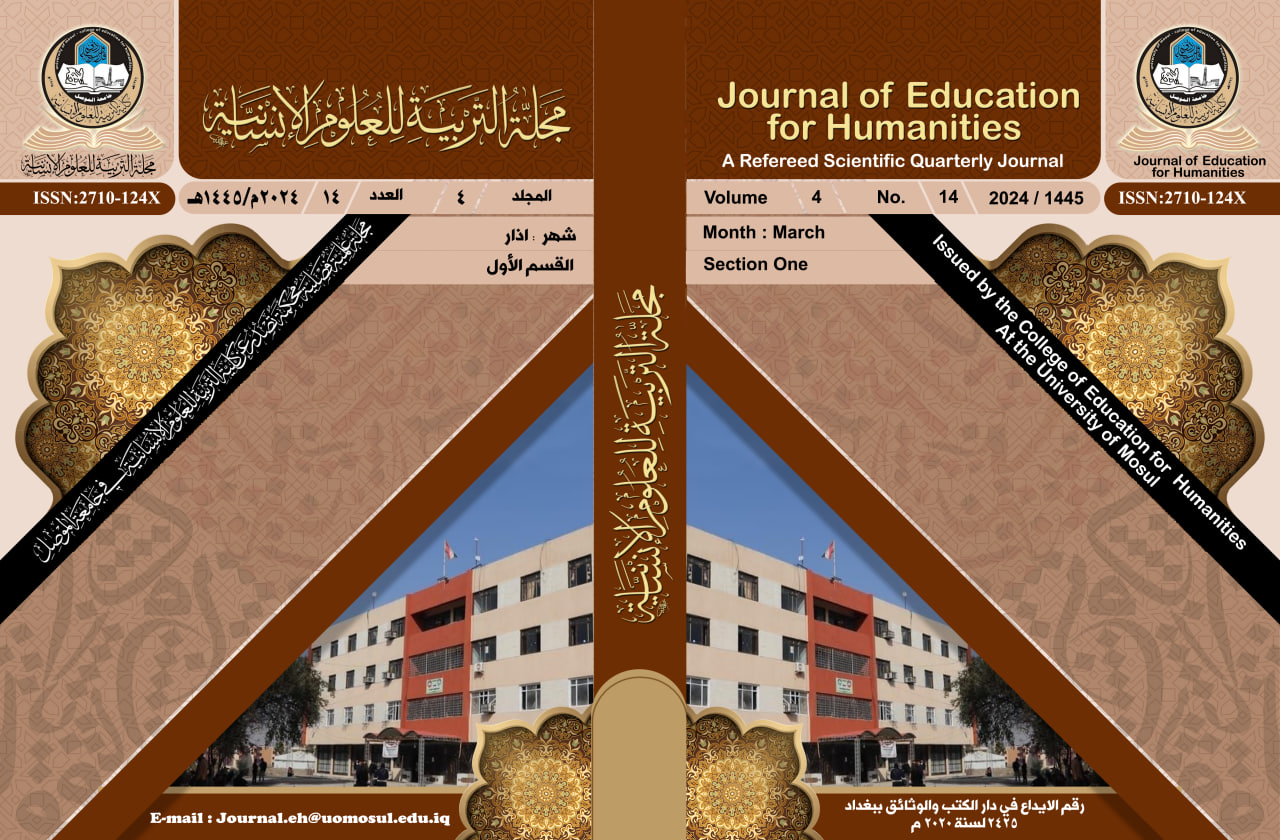Abstract
The research aims to identify the effect of cognitive stimulant strategies on the achievement of second-grade intermediate students in Arabic language. To achieve the aim of the research, the researcher formulated the following null hypothesis: - There is no statistically significant difference at the level (0.05) between the average scores of the experimental group students who were studied using the strategies of cognitive stimulants and the average scores of the control group students who were taught in the traditional way in the post-achievement test in the Arabic language. The researcher adopted the experimental design for two equal groups, where the research sample, which was intentionally selected, consisted of (63) female students who were distributed into two groups, the first experimental group consisting of (31) students who were studied according to the strategies of cognitive stimulants, and the second control group consisting of (32) A student studied according to the traditional method, in the city of Mosul section for the first course of the academic year (2021-2022) and the researcher conducted a process of parity for the two groups in some variables (the female students’ scores in the Arabic language for the previous year, the general average for the previous school year, age in months, the quotient intelligence, educational level of the parents). For the two middle schools (Al-Hadba and Al-Ramah), the researcher supervised the application of the experiment. To achieve the goal of the research, the researcher prepared a tool to measure achievement that consisted of (30) paragraphs and for the following topics (the five nouns, the morphological scale, the participle of the subject, the absolute object, the exception with (except). On the apparent honesty and content validity, then it was applied to the sample to measure the difficulty level of the paragraphs, the discriminatory power, and the effectiveness of the wrong alternatives. The reliability coefficient of the collection tool was extracted with the equation (Kuder-Rechard son_20), and the value of the reliability coefficient reached (0.82), which is an acceptable percentage, and after preparing the teaching plans and preparing the tool, the The researcher applied the experiment on Wednesday (17/11/2021) and continued to apply it to the research sample, until Saturday (15/1/ 2022) and the results showed the following: - There is a statistically significant difference at the level (0.05) between the average scores of the experimental group that was studied according to the strategies of stimulants of cognition and the average scores of the control group that was studied according to the usual method in the achievement test in favor of the experimental group. The statistical methods that have been adopted are: t-test for two independent samples, chi-square test, difficulty equation, discrimination equation, Couder-Richardson equation (K-20), and the alternatives effectiveness equation. In light of the research results, the researcher reached the following conclusions: The use of cognition stimulants strategies have an impact on raising the achievement of Arabic language (grammar) for second-grade intermediate students. In light of the results that have been reached, the researcher recommends the following: 1- Adopting the strategies of cognitive stimulants as a basic method in teaching the Arabic language, especially the grammatical rules, because of their impact on raising the level of achievement and working on the transfer of information from the theoretical side to the practical side. To complement the current research, the researcher suggested suggestions, including: 1 - The effectiveness of cognitive stimulant strategies in self-learning for intermediate stages in the Arabic language subject (experimental study). 2- Comparison between the formula of strategies of cognitive stimulants used previously by Arab scientists and strategies of stimulants of cognition in its modern form, and any stimulants that were previously used more than other stimulants (descriptive study)

